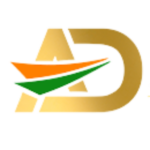Eligibility Criteria Fixed Asset Management
Ownership of Assets: The organization must own fixed assets such as machinery, vehicles, real estate, and office equipment that need to be managed and tracked.
Accounting System: The business should have a robust accounting system in place, capable of handling asset tracking, depreciation, and financial reporting.
Dedicated Staff or Team: The organization needs qualified personnel or an asset management team to handle asset maintenance, audits, and reporting.
Compliance Requirements: Businesses must adhere to accounting standards (like GAAP or IFRS) and tax regulations, which may require the tracking and reporting of fixed assets.
Technology Infrastructure: The company must have or implement asset management software or tools for tracking, updating, and maintaining asset records.
Documentation: Businesses must have proper documentation (purchase invoices, warranty information, maintenance schedules, etc.) for the fixed assets.
Depreciation Policies: Companies must have clear depreciation policies in line with tax laws and accounting standards to calculate asset depreciation accurately.








